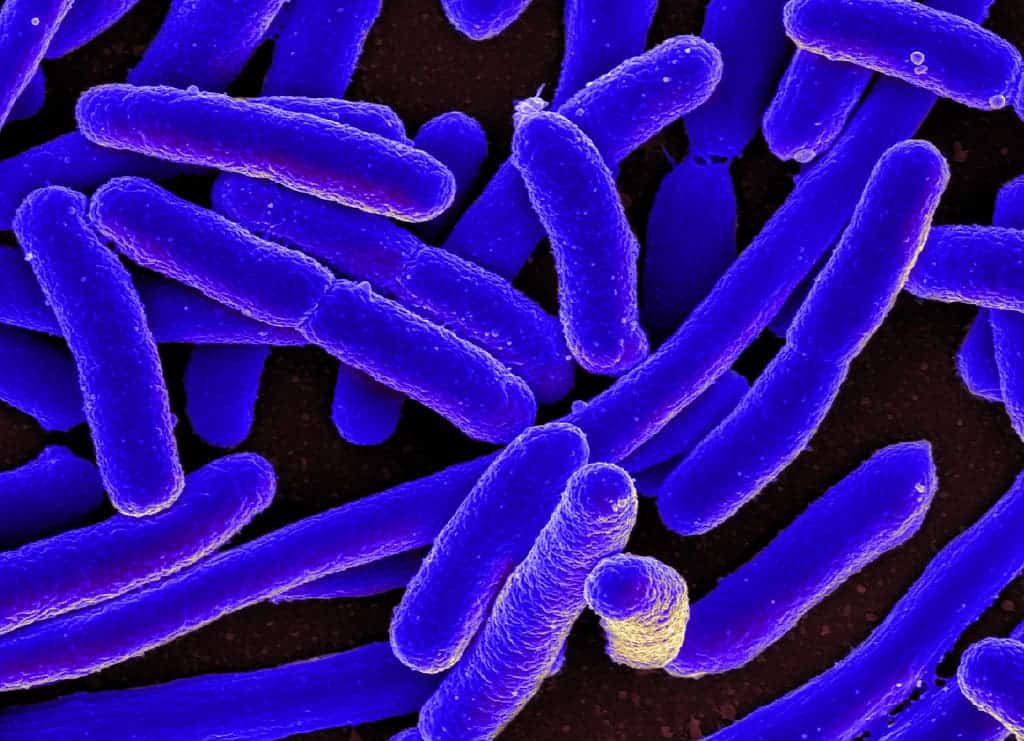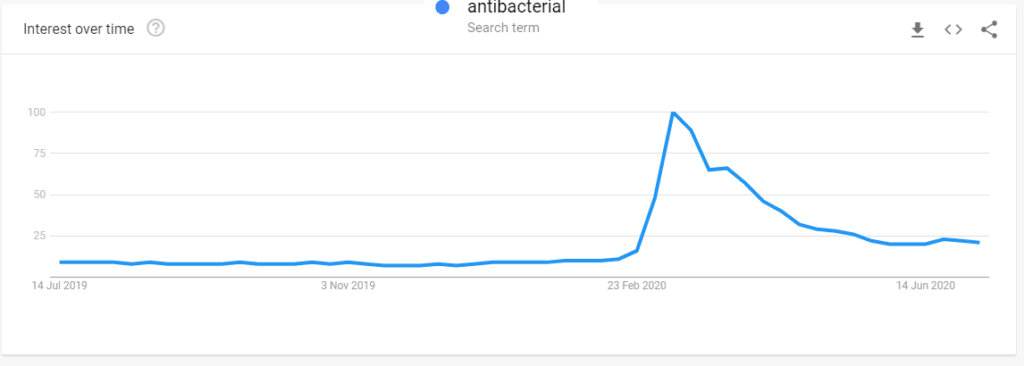What was your reaction when you realized that COVID-19 was ravaging the world? Did you ignore it at first until you saw what happened in Italy?
Many people and governments had this exact type of response. It seems that dealing with a novel virus disoriented everyone, even as we were seeing the damage being done in other places. The extent of the problem became clearly visible as Italy and other European countries started having higher cases of infections. Eventually, COVID-19 was listed as a pandemic and this made it clear to everyone that COVID-19 is a serious disease.
What followed was a panic response. Everyone kept wondering what they were supposed to do to remain safe and free from the virus. One of the things that stood out for me was the discussion and panic buying of antibacterial agents, which was further amplified on social media.
As a microbiologist, this was astonishing.

Why are we focusing on antibacterial agents when we are dealing with a virus? Haven’t we had a lengthy discussion about antimicrobial resistance and the resulting challenges that antibacterial agents pose to this problem?
Looking at Google Trends, I realized that there has been an increase in search interest for ‘antibacterial agents’ from February and the peak was in March. Globally, people were searching for antibacterial options that would keep them safe from the virus.
There was also a search interest in ‘how to make antibacterial hand soap’ which might reflect the initiative that people might have taken at home. This is a risky scenario that might promote antimicrobial resistance.
So what’s happening?

First, what are antimicrobials?
Antimicrobials are agents that can either kill or inhibit the growth of microorganisms. The discovery of Tetracycline (by Paul Ehrlich) and Penicillin (by Alexander Fleming) as antimicrobial agents set the foundation for research into these agents.
Depending on the nature of antimicrobials, some agents are effective towards bacteria (antibacterial), fungi (antifungal), and viruses (antiviral). There is a common misconception that antimicrobial agents are effective against all microorganisms but this is not the case. For example, antibacterial agents are not effective against viruses.
At the moment, there are a variety of antimicrobials that have a wide scope of applications in hospital and healthcare settings, industrial settings, cleaning products, and pesticides.
According to the World Health Organization (WHO), “Antimicrobial resistance happens when microorganisms (such as bacteria, fungi, viruses, and parasites) change when they are exposed to antimicrobial drugs (such as antibiotics, antifungals, antivirals, antimalarials, and anthelmintics).”
Microorganisms continue to evolve as they strive to adapt to their environment. Since antimicrobials either kills or inhibits growth, microorganisms respond to environmental changes (through evolution), which can lead to antimicrobial resistance.
This occurs due to the presence of resistance genes that help the bacteria to withstand or avoid the action of antimicrobial agents and thereby creating resistance. Furthermore, mutations of microorganisms during replication and gene transfer can also lead to resistance.
Here’s how antibacterial resistance can develop:
Exposure of bacteria to antimicrobials shows that there are two populations of the bacteria (non-resistant that die after exposure and the drug-resistant one that withstands the drug and continues to multiply).
Photo Credit: NIAID
Exposure of bacteria to antimicrobials leads to mutation of the bacteria. Some of the mutants will withstand the treatment and continue to grow leading to resistance.
Photo Credit: NIAID
When different species of bacteria interact, gene transfer can take place. If some of the genes being transferred are resistant to antimicrobials, then resistance can also be transferred to other species.
Photo Credit: NIAID
We’re making it worse
Microbial evolution is accelerated by the inappropriate use of antimicrobials. Prescription of antibiotics when not needed and failure to take a full dose creates room for the evolution of microorganisms. Furthermore, hospitals form suitable breeding for resistant microbes due to the availability of a wide range of antimicrobials. This leads to the proliferation of resistant microorganisms.
Antimicrobial resistance is one of the biggest and most challenging healthcare problems in the world. According to the Centers for Disease Control and Prevention (CDC), “Each year in the U.S., at least 2.8 million people get an antibiotic-resistant infection, and more than 35,000 people die.” This scenario is prevalent worldwide — and in the COVID-19 era, that’s even more pressing.
There are two main reasons why using antibacterial agents in the COVID-19 era is problematic. Firstly, antibacterial agents work against bacteria, not viruses. Secondly, the inappropriate use of antimicrobials may create a suitable ground for the development of bacterial resistance for these agents.
According to the US Food and Drug Association (FDA), “…there isn’t enough science to show that over-the-counter (OTC) antibacterial soaps are better at preventing illness than washing with plain soap and water. To date, the benefits of using antibacterial hand soap haven’t been proven. In addition, the wide use of these products over a long time has raised the question of potential negative effects on your health.”
This should be a wakeup call to all of us now and in the future. We should desist from using antibacterial agents especially in such cases where water and soap serve the purpose.
How antibacterial agents can contribute to antimicrobial resistance
The main challenge with this pandemic is that we don’t know when it’s going to come to an end. We have to wait for a vaccine and/or the availability of a treatment option to curb the menace. Until then, we might continue upholding health measures that are in place.
According to the Medical Futurist, there are some new habits that we have adopted in the COVID-19 era which might continue post-COVID-19.“Awareness for personal and public hygiene measures saw a surge thanks to the contagion. Health authorities are advocating for regular handwashing with soap for at least 20 seconds. Social distancing measures are in place. People are getting used to wearing facemasks for grocery shopping. These new-formed habits could linger way after lockdowns are lifted, leading to overall better hygiene.”
This is a good thing and it might be encouraging to see improved personal and public hygiene. However, the reverse is also true. If wrong measures persist, then we can expect to see negative outcomes. This would be the case for some antibacterial agents. Although antibacterial soaps are banned in the US, we should be concerned that there was interest in ‘how to make antibacterial hand soap’ especially when done at the household level. Personal measures and activities should be guided by science and they should be based on the recommendations that have been put in place by reputable organizations such as CDC and WHO.
Alcohol-based alternatives especially for sanitizers are the recommended antimicrobial agents and those should continue to be used.
Using cleaning substances containing antimicrobial agents such as triclosan may be detrimental in the long run. According to the US FDA, the detrimental effects of triclosan have been established. In particular, bacterial resistance has been documented.
“Laboratory studies have raised the possibility that triclosan contributes to making bacteria resistant to antibiotics. Some data shows this resistance may have a significant impact on the effectiveness of medical treatments, such as antibiotics.”
Other antibacterial agents should also be looked at in the same lenses as triclosan. The ability of microorganisms to adapt and change through evolution should guide us while handling antibacterial agents. To achieve this, consumer awareness is vital as this would lead to the avoidance of these substances. They tend to give a false sense of security which further aggravates the problem. Consumers should evaluate the ingredients that are used to make antimicrobial-based products as well as seek medical advice before using them.
Running water and soap is enough
To some, using ordinary soap and running water to clean hands does not sound effective enough. This is farther from the truth. One of the health measures that was provided was using clean running water and soap to clean hands. Although soap does not kill microorganisms, it is highly effective in germ removal from hands. This is the main reason why the use of soap and running water is advocated for.
Since we live in a digital age, misinformation can lead people to take actions that they deem fit even when they are not. This explains why people were searching for antibacterial agents. To avoid these scenarios, consumers should seek advice from reputable organizations such as the CDC and WHO. We have seen that antibacterial agents do not confer additional benefits compared to running water and soap. Furthermore, these substances increase the risk of antimicrobial resistance and the best way forward should be to avoid these agents.
This is a guest article by Asaph Kuria.



